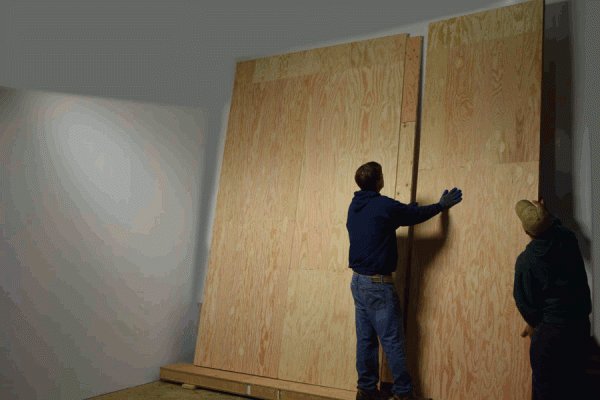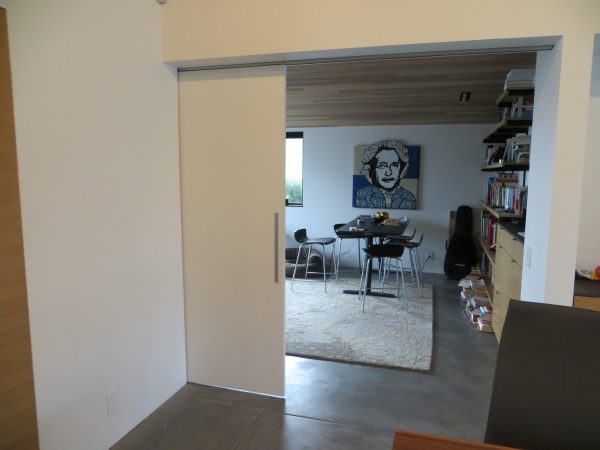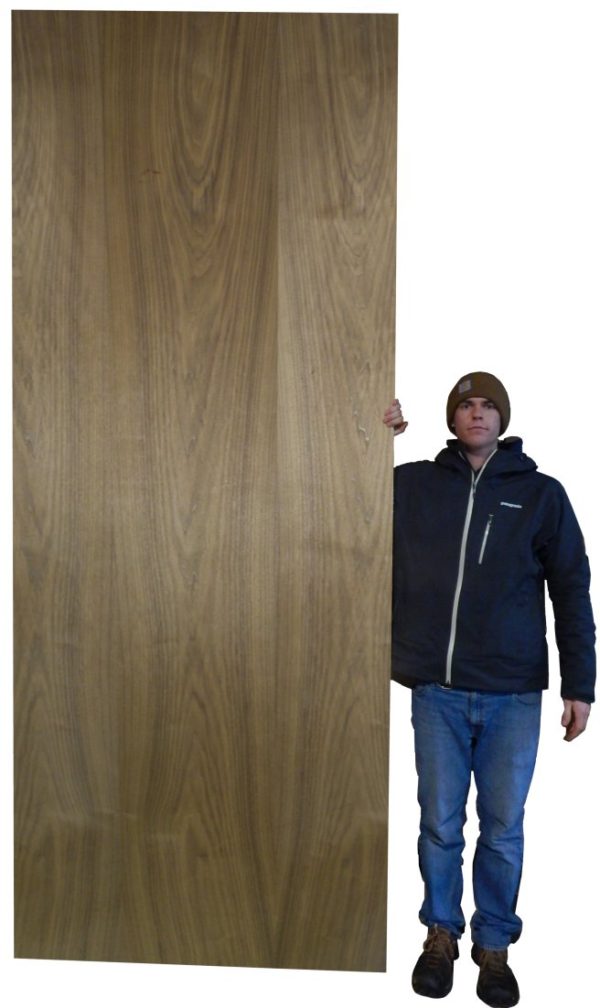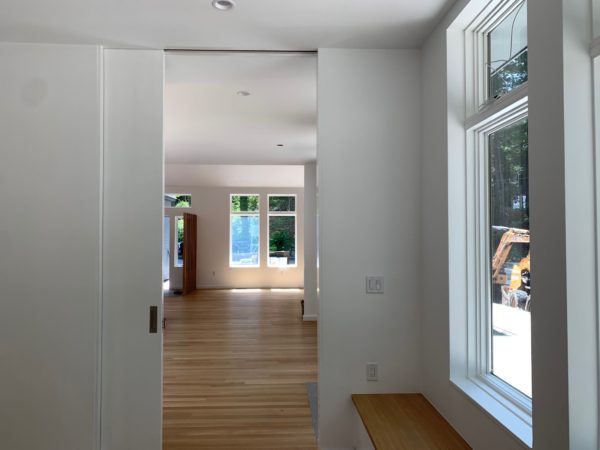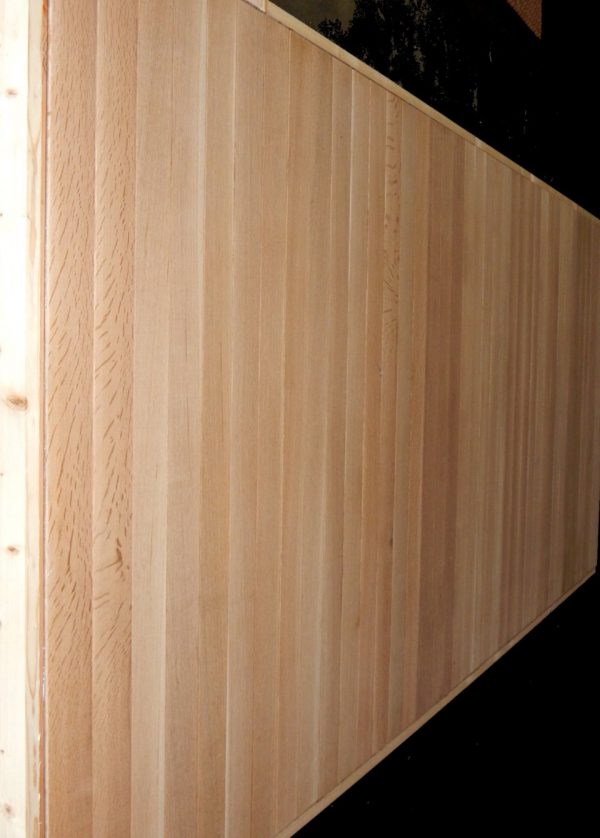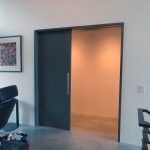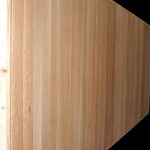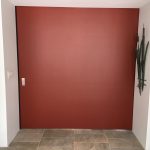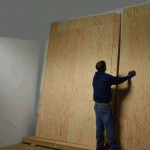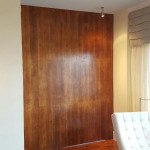For years, large pocket doors were not being installed in new builds due to problems associated with pocket doors which exceeded the normal range of door sizes. The biggest concern with these big pocket doors was their tendency to twist or cup according to the season.
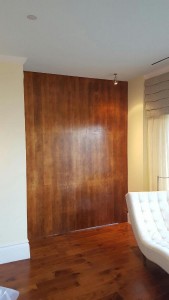
 If you haven’t experienced such challenges, it doesn’t take too much stretch of one’s imagination to entertain how frustrating it would be to open or close your large pocket door only to find it had seized up either inside or outside of its pocket housing.
If you haven’t experienced such challenges, it doesn’t take too much stretch of one’s imagination to entertain how frustrating it would be to open or close your large pocket door only to find it had seized up either inside or outside of its pocket housing.
Pocket doors are a magnificent way to cordon off an area or open up two adjoining spaces quickly and easily, and if your sliding pocket doors operate as expected, it’s an elegant sight to behold as the sliding doors smoothly disappear into their wall cavities. This is why they are sometimes referred to as a hidden pocket door or concealed sliding door. No swinging into the room so as to disrupt the area or require clearance for opening and closing, and not to be seen in the open position, as if they were never there in the first place.
Thanks to inventor Peter Sing, large pocket doors are coming back into new builds and remodels because he has provided the door industry with the warp-free technology required to create warp-free large pocket doors which can be guaranteed not to warp, bend, twist, cup, or otherwise fail, for 50 years.
Sing’s core, which he calls, “Sing Core,” enables pocket door manufacturers to create large pocket doors of immense size built of any material, measuring up to 50 ft or more, and still be guaranteed to offer fail-free service for 50 years.
Sing’s Eco-friendly patented and patent-pending warp-free technologies enable his factory to create non-warping substrates which are high precision (+/- .006 in.), fully insulated (R3.5 or R6.5) for sound dampening and climate control, lightweight (1/3 or less the weight of other wood-based solid core large pocket door blanks), high strength (660+ PSI, stronger than steel pound for pound), and backed by Sing’s unprecedented 50-year guarantee.
All that reduction in weight and increased strength, precision, and insulation changes the whole dynamics of a sliding door inside wall which would otherwise be problematic, so you don’t have to worry about your pocket sliding door that goes into a wall which may never come out. You can rest assured that your sliding doors into wall cavity will serve your safely, securely, and reliably over their 50-year guaranteed service life.
If you really want to upgrade your efficiency and the impact garnered by operating your precision large pocket doors, install a double pocket door. That’s right, two separate large double sliding pocket doors side by side, each sliding doors into wall cavity respectively independently or in unison. Make them full floor to ceiling large dual pocket doors for full effect.
Using Sing’s technology, you won’t have to worry about shelling out the big bucks for heavy duty large pocket door hardware because the hardware rating required to operate your door efficiently is based on the weight of your pocket door. Large pocket doors with Sing’s core inside weigh far less, enabling designers and installer to use less expensive pocket door hardware reducing the overall pocket door price.
Heavy duty pocket door track is unnecessary, as are expensive pocket door rollers, or other heavy-duty hardware or equipment. Sing’s lighter in weight large pocket doors are much easier to transport, manhandle, move about the job site, and install resulting in savings in pocket door cost all the way around.
Now you can have a heavy-duty impact resistant large pocket door that is lightweight and high strength without all the added expense and regular maintenance of any other type of heavy duty pocket door.
DIY Pocket Door
Okay, since you asked, “Can I create a DIY version of a large pocket door with Sing Core inside?” The answer is (with respect to Sing’s patents), you could create your own wood pocket door in do it yourself fashion using Sing’s ideas.
You will need some carpentry skills, woodworking tools, and a shop if you’re thinking about adding a pocket door to your DIY list of projects. If you’re ready, you’ll need a perfectly flat work surface a little larger than the size of your proposed custom pocket doors. You will also need a DIY cold press system, which could include lots of clamps or a vacuum bag lamination system.
First, you will need to build the torsion box grid substructure. You can find directions online using Google how to build a torsion box grid, but note that unlike the instructions you will find, Sing using vertical grain orientation in the wood fiber used for the torsion box, not horizontal, for added shear strength.
Sing also knows the small the individual cells of the torsion box, the more strength, so his cells vary depending on the application from 2×2, 2×3, or 3×3-inch cells.
Build your torsion box inside a wood frame and insert any necessary hardpoints (wood blocking for door hardware). After you’ve completed the torsion box in the desired size, glue rigid foam (Sing uses recycled EPS foam as his default in the factory, but clients may specify other materials) inside the empty spaces inside the otherwise empty torsion box centers, and let dry.
Precision sand this reinforced wood fiber/foam core to the exact desired thickness.
Now you have a dimensionally stable lightweight core which needs to be sandwiched between two stress skins (say quarter-inch plywood) and this is cold-pressed and left to cure.
You’re on your way to building a pocket door by laminating your desired wood surface material and any edge trim you may want as you’re getting ready to be adding pocket door to existing wall(s) in your project location (home, office, etc.).
This should be suitable for making a pocket door which is lightweight, high strength and will work for any 8 foot pocket door or less.
Why 8-ft. pocket door or less? Because Sing’s True Flat Team uses additional patented and patent-pending anti-warp technologies which take into account the size of the large pocket door, the surface materials, its application, whether it will be an interior pocket door or exterior pocket door, how often and when will it be used, and in some cases which direction the door faces to determine the exact components within his composite hybrid core.
Sing is well known for using this patented method to build the best pocket door in the world because his factory is staffed with both the craftsmen and equipment (the biggest panel saws, glue machines, sanders, and presses in the industry) to create large pocket doors in a reasonable amount of time.
The biggest and best pocket door manufacturers, millworks, and custom pocket door builders rely on Sing’s ability to deliver such high precision pocket door cores in time and within budget to get the job done, without having to risk the embarrassment of selling a potentially warping large pocket door.


